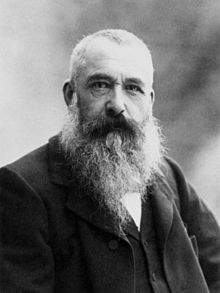 Impressionism is a 19th-century art movement characterised by relatively small and thin brush strokes, open composition, emphasis on accurate depiction of light in its changing qualities (often accentuating the effects of the passage of time), ordinary subject matter, unusual visual angles, and inclusion of movement as a crucial element of human perception and experience. Impressionism originated with a group of Paris-based artists whose independent exhibitions brought them to prominence during the 1870s and 1880s.
Impressionism is a 19th-century art movement characterised by relatively small and thin brush strokes, open composition, emphasis on accurate depiction of light in its changing qualities (often accentuating the effects of the passage of time), ordinary subject matter, unusual visual angles, and inclusion of movement as a crucial element of human perception and experience. Impressionism originated with a group of Paris-based artists whose independent exhibitions brought them to prominence during the 1870s and 1880s.
Artists
Claude Monet
 Oscar-Claude Monet was a French painter and founder of impressionist painting who is seen as a key precursor to modernism, especially in his attempts to paint nature as he perceived it.
Oscar-Claude Monet was a French painter and founder of impressionist painting who is seen as a key precursor to modernism, especially in his attempts to paint nature as he perceived it.
The term "Impressionism" is derived from the title of his painting Impression, soleil levant, exhibited in the 1874.
During his career, he was the most consistent and prolific practitioner of impressionism's philosophy of expressing one's perceptions before nature, especially as applied to plein air landscape painting.
Berthe Morisot
 Berthe Marie Pauline Morisot was a French painter and a member of the circle of painters in Paris who became known as the Impressionists.
Berthe Marie Pauline Morisot was a French painter and a member of the circle of painters in Paris who became known as the Impressionists.
In 1864, Morisot exhibited for the first time in the highly esteemed Salon de Paris, the annual exhibition of the Académie des beaux-arts. Her work was selected for exhibition in six subsequent Salons until, in 1874, she joined the "rejected" Impressionists in the first of their own exhibitions.
She was described by Gustave Geffroy in 1894 as one of "les trois grandes dames" of Impressionism alongside Marie Bracquemond and Mary Cassatt.
